Bright, Unique Lavender Flowers for Up to 6 Months
Why Muskogee Crape Myrtle Trees?
Not only is the Muskogee one of the few Crape Myrtle varieties with rich lavender-purple flowers…but it also delivers color and full blooms for up to six months! No true blue Crape variety exists, but the Muskogee comes close with its cool lavender undertones. Choose between two different versions of this bright tree - a stately, elegant single-stem trunk, or a full, lush multi-stem!
Plus, Muskogees are one of the fastest-growing Crape Myrtle Trees available. That means your Muskogee will quickly mature to the perfect height for colorful ornamental use. Plus, because the Muskogee is adaptable to a wide range of soil types, resistant to powdery mildew, and tolerant of drought, you won’t have to lift a finger.
When other Crape Myrtle varieties succumb to mildew, your Muskogee will keep growing strong, even in humid areas of the South. No messy or harsh sprays are necessary to get the vibrant blueish-toned flowers and rich cinnamon-hued bark of your Muskogee.
Why Fast-Growing-Trees.com is Better
When you order your Muskogee Crape Myrtle from Fast Growing Trees, you get standout blooms and a well-developed root structure that will support rapid growth.
Muskogees are hard to find at local garden centers, and if they are sold, they’re often frail and feeble. But your Muskogee arrives with healthy branching and multi-trunk growth, ready to explode with color.
In fact, when you buy our larger Muskogees, you can get one-of-a-kind color and voluminous blooms as soon as the first season.
Upgrade your landscape in a snap with the eye-catching blooms of the Muskogee. This unique variety will have your neighbors and guests talking, month after month. Get the beauty of the Muskogee Crape Myrtle for yourself today!
Planting & Care
1. Planting: Plant your Muskogee in a full sun location (6 to 8 hours of sunlight) with well-drained soil.
Dig your hole twice as wide as the root ball and just as deep. Lightly comb your hands over the root ball to free up the roots a bit before planting. Place your tree in the hole and make sure that the root crown (where the root ball meets the trunk of the tree) is level with the soil surface.
Tamp down the soil lightly as you backfill the hole to prevent air pockets from forming and then water after you’ve finished to settle the soil. Mulch the area around the tree to conserve water moisture and deter competing weeds and grasses.
2. Watering: Crape Myrtles are drought tolerant and can thrive on rainfall alone after they’re established. However, you should water young plants once or twice weekly in the meantime. If you’re not sure when to water, simply check your surrounding soil about 3 inches down for dryness.
After your Crape is established, it will only need to be watered during extended dry periods.
3. Fertilizing: Feed your Crape with a high-nitrogen fertilizer in the spring, before new growth begins.
4. Pruning: Thin out young trees to 3 to 4 main branches. After blooming in spring, clip the tips of the branches. Make the cut just above the point where a pair of leaves attaches to the stem.

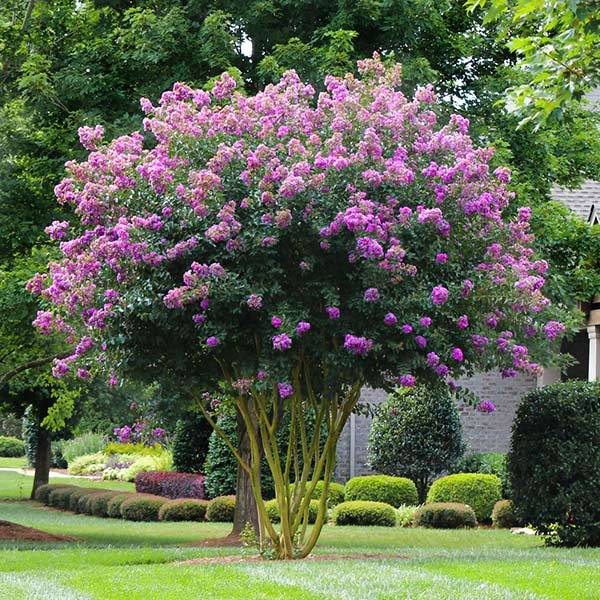
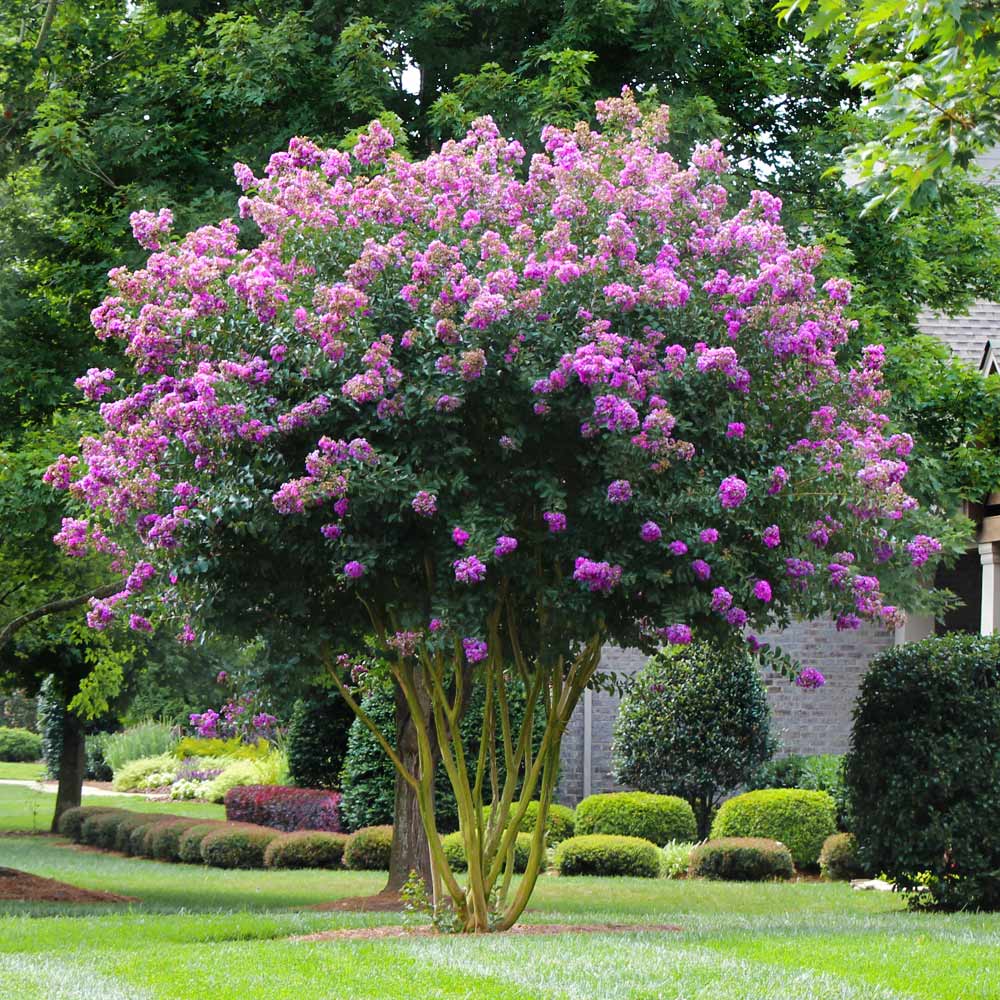
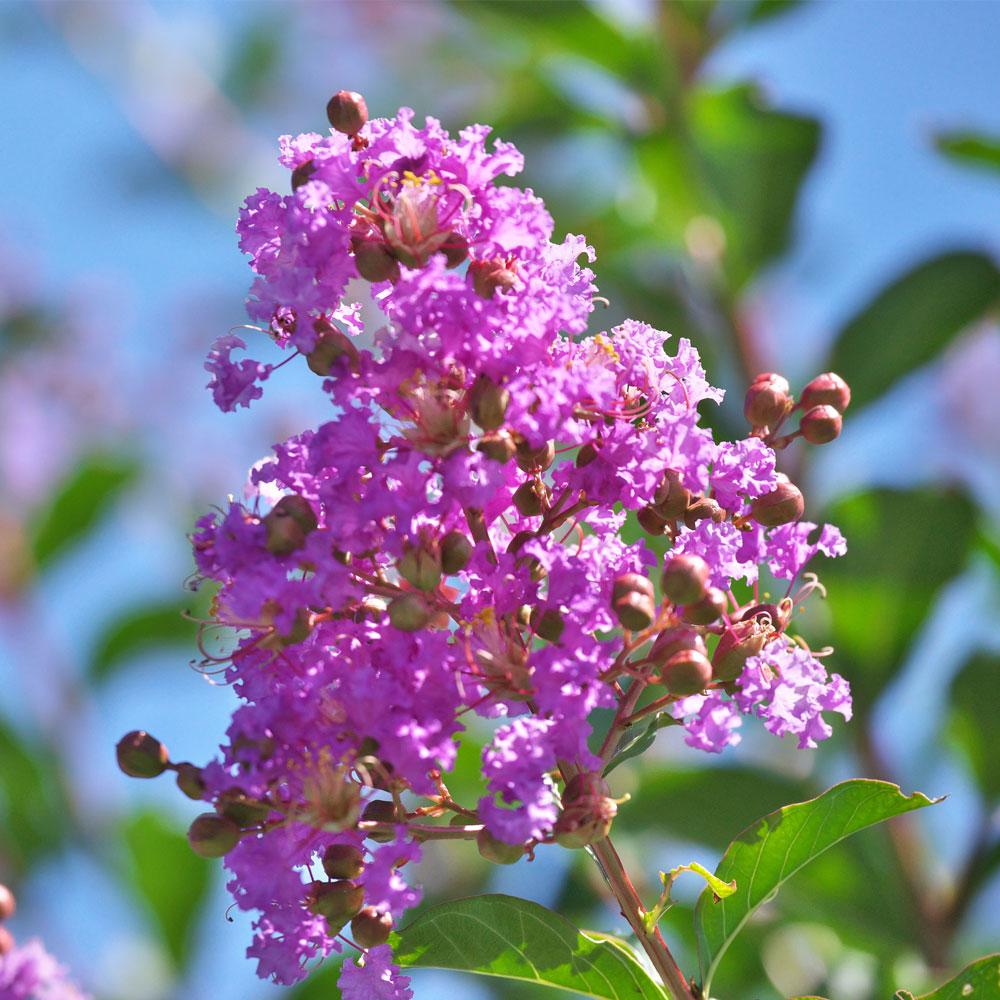

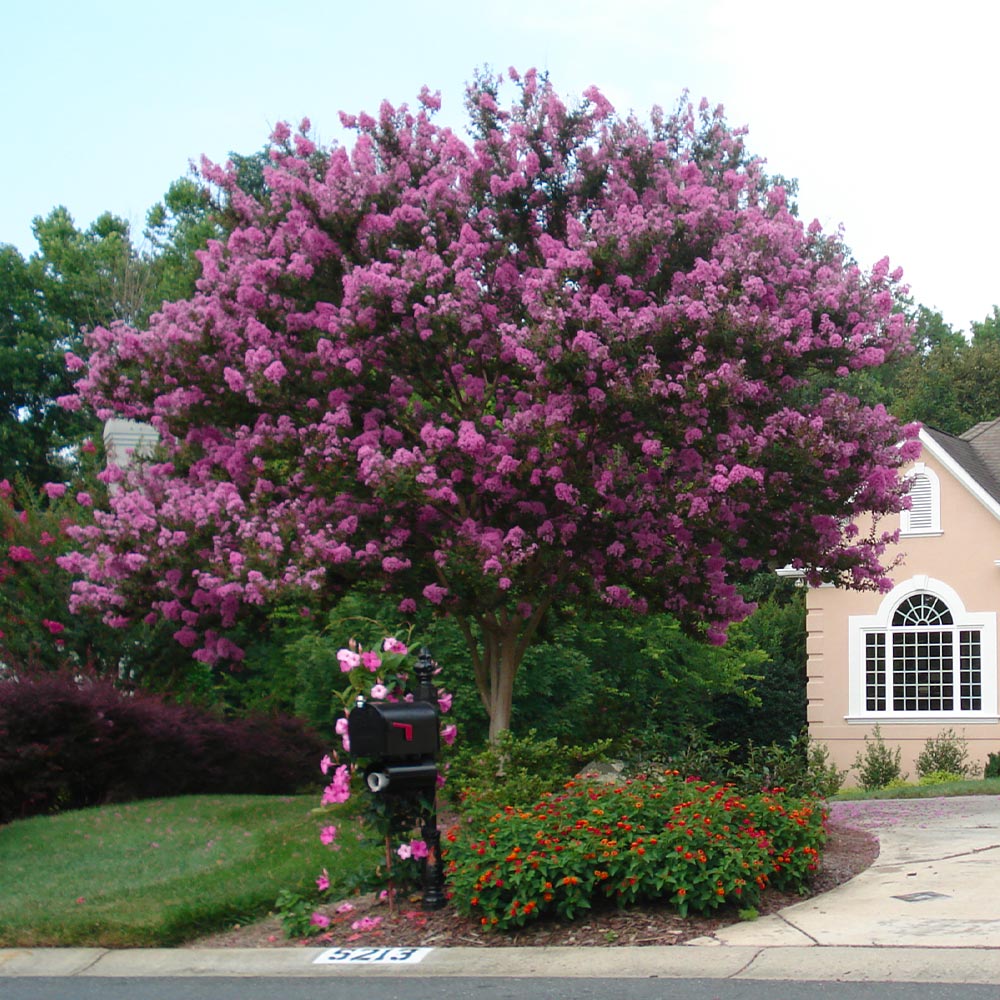
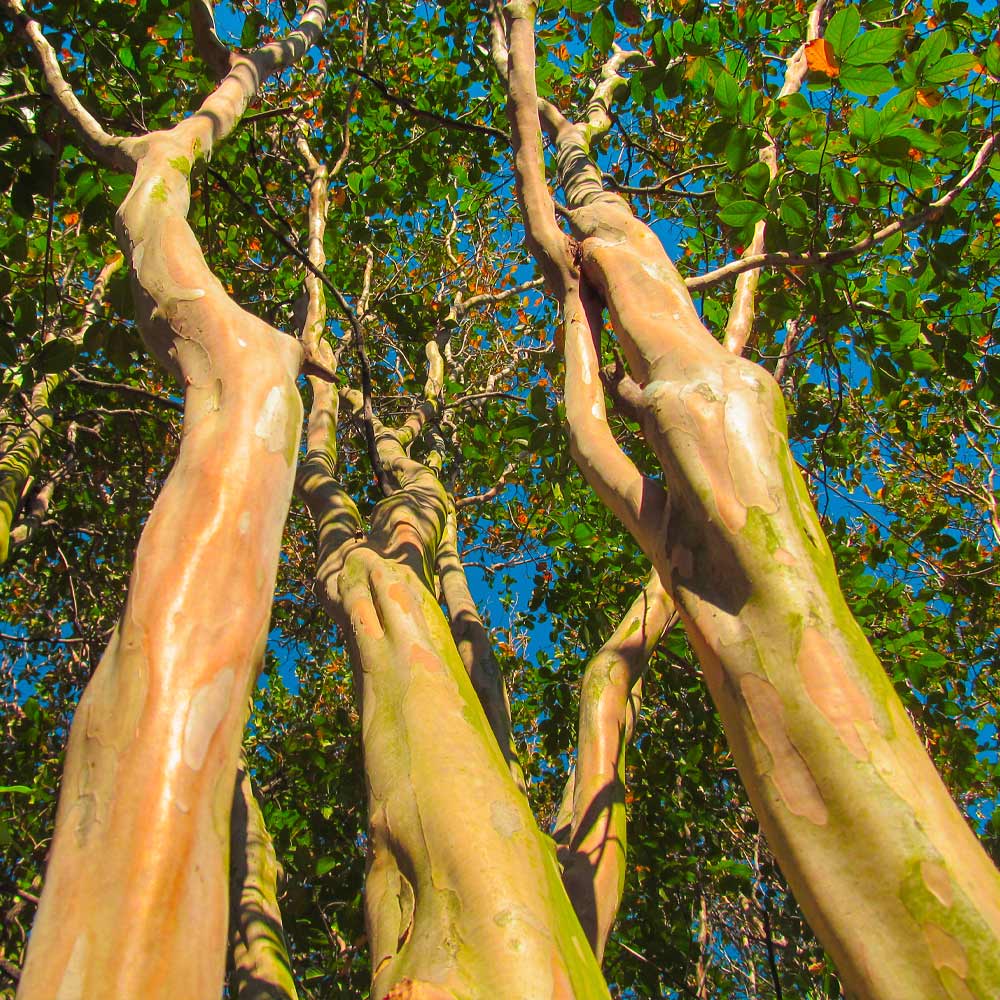


Comment